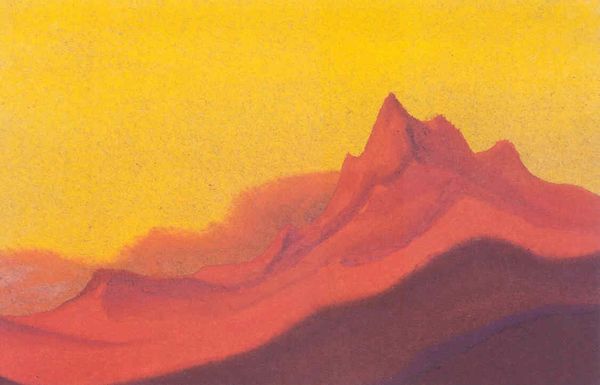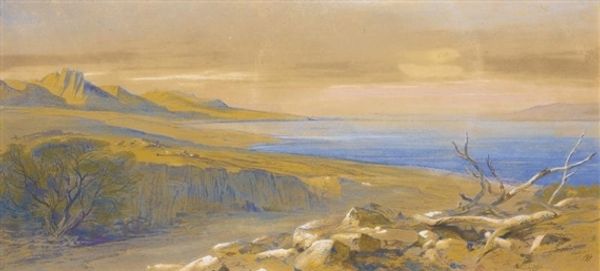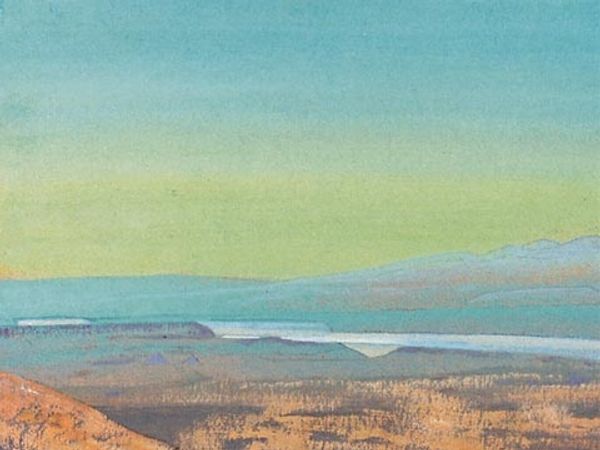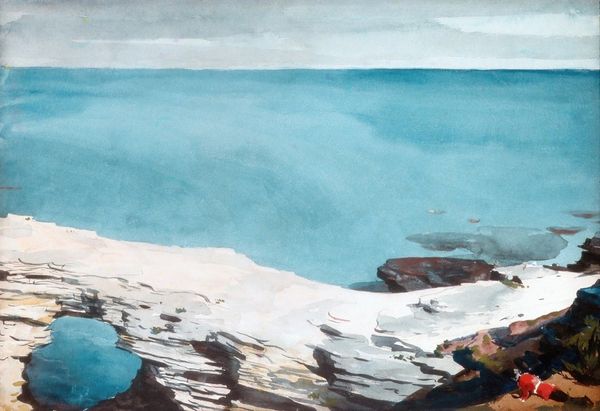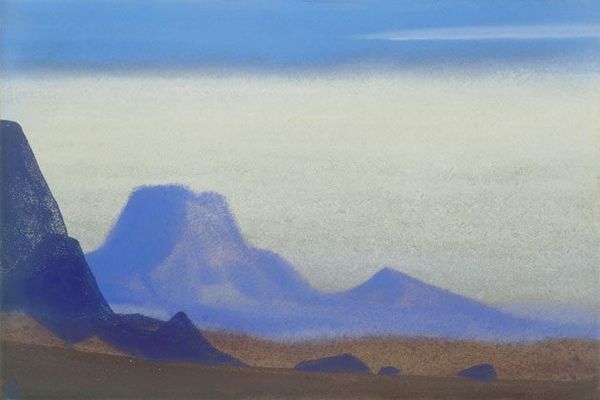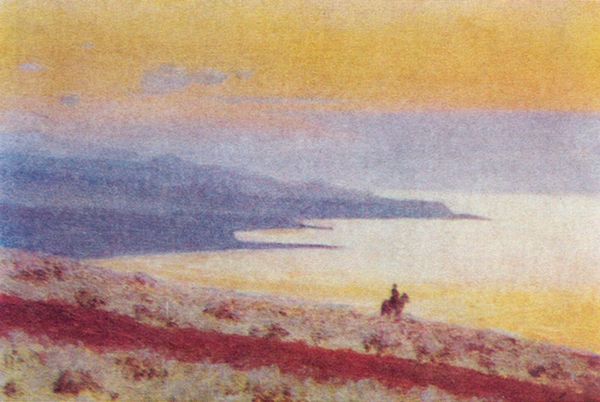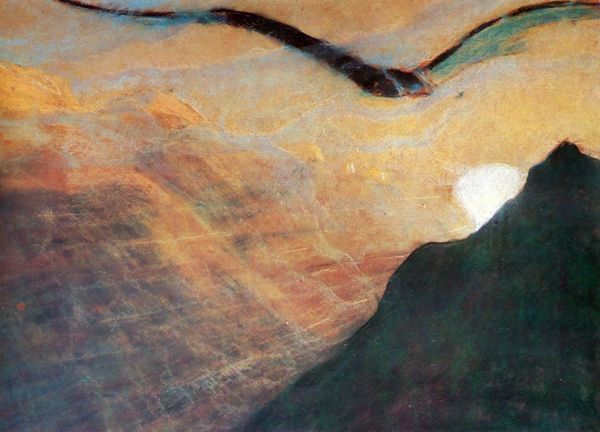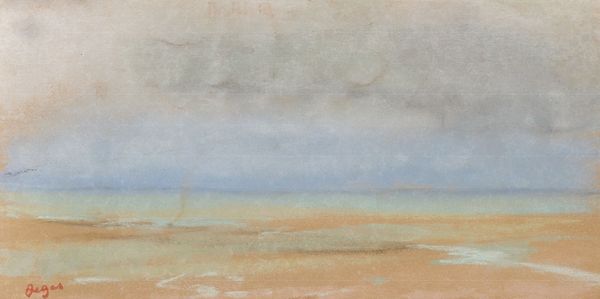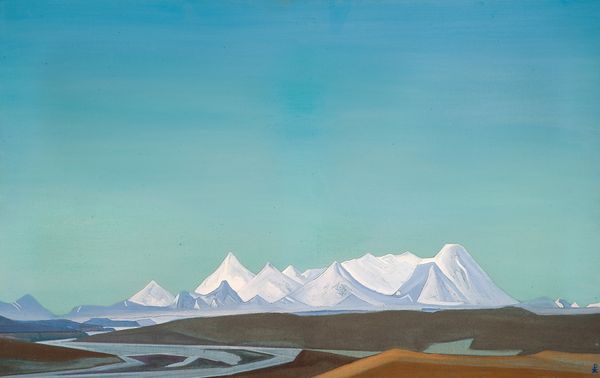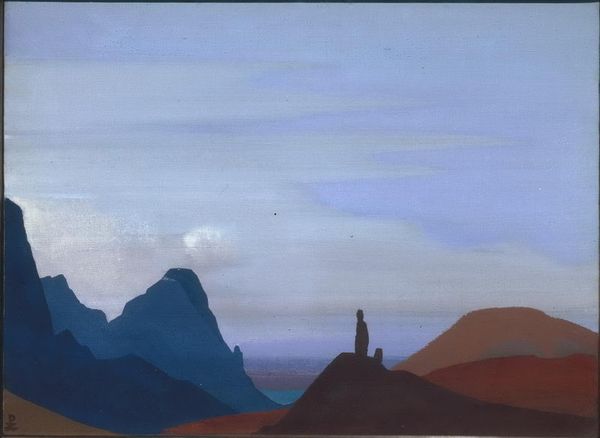
Copyright: Public domain
Editor: So, here we have Kuindzhi’s "Volga," painted in 1895. It's an oil painting. The composition is so simple, a sliver of land and a vast sky and water. It almost feels…hypnotic? What do you see in this piece? Curator: Beyond the immediate impression of vastness, I’m struck by how Kuindzhi uses the Volga not just as a river, but as a symbol. Think of water in art as representing time, change, and the unconscious. Here, that sense of depth suggests profound cultural memory, perhaps a reflection on Russia's own historical currents. Do you find that idea resonating at all? Editor: Definitely, I can see that. I guess I was more focused on the sheer scale and light. Curator: Indeed, the light itself carries meaning. The subdued sky, that band of hazy light on the horizon… It evokes a particular mood. What emotions come to mind for you? Think about how light has been used in spiritual art through the ages. Is it illumination, hope, or something more melancholic here? Editor: Melancholic, definitely, now that you mention it. There's a stillness, almost a sadness. It's like the calm before or after a storm. Curator: Precisely. And consider the clifftop in the foreground, almost glowing in earth tones. Its stillness against the water's movement creates a duality, doesn't it? It might be read as steadfastness juxtaposed against fluidity, like a silent witness to the ceaseless flow of time. It acts like a repoussoir, drawing us into the painting, into Russian history itself. Editor: That's such a fascinating perspective. I wouldn't have picked up on all those layers on my own. Curator: That interplay of surface appearance and symbolic weight… It truly enriches the viewing experience, don’t you agree? Editor: Absolutely! This has definitely given me a whole new appreciation for landscape paintings. Thanks!
Comments
No comments
Be the first to comment and join the conversation on the ultimate creative platform.
